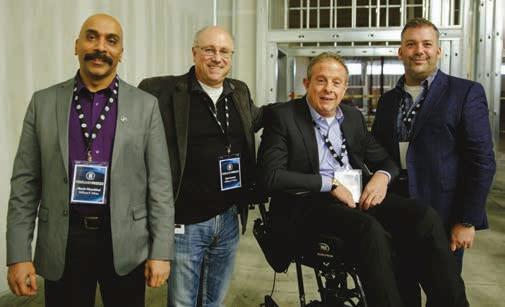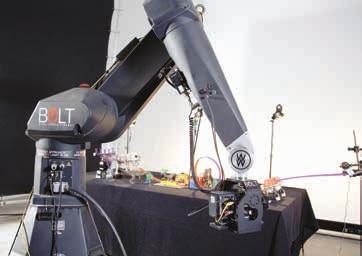
3 minute read
CSC 4K Panel
Credit for this photo is: Zoe Alexopoulos of Flofoto
William F. Whites February Freeze
By IAN HARVEY
The 4K Panel
Apanel on 4K discussion at William F. White’s February Freeze event came away with the consensus that storytelling doesn’t depend on technology to capture an audience. That said, there was also a strong case to be made that Ultra High Definition, more than 4K, will be a game changer in the broadcast arena. The panel was moderated by Arthur Cooper csc and included Samy Inayeh csc; Dylan Macleod csc; associate CSC Martin Wojtunik; Nick Iannelli, senior vice-president, postproduction, Deluxe Toronto; Peter Slisarenko, director, PSA Sales Canada, Sony Professional Solutions Americas Sony; Les Zellan, chairman and owner, Cooke Optics; and Matthew Bush, president and partner, Triangle Post. It’s the real deal, Bush said, noting that while 3D was falsely promoted as the next big thing, it flopped when consumers rejected it as a novelty. UHD, however, is different. While distributors and producers are demanding 4K as a minimum standard,
and consumers have been flooded with options to upgrade to 4K screens, it’s probably UHD that is going to make inroads faster and set the standard for the foreseeable future. It all comes down to perception. DCI 4K is 4096 by 2160 pixels, four times that of HD, which is 1920 by 1080. Broadcasting all that data becomes an issue, so the standard for television currently is settling at UHD-1, also known as 2160p, which in 16:9 comes out at
Storytelling Must Drive the Medium, Not Technology
3840 by 2160 pixels. “The difference between 1080 and UHD on a screen is noticeable but the difference between UHD and 4K is not that much to the average person,” Iannelli said. The frustration from a shooter’s perspective is not really being able to choose the camera system you think would work best for a specific problem. “I shoot what I’m told,” Inayeh said, noting that companies like Netflix have set hard lines on what they will and won’t accept and it has been 4K or nothing. The ALEXA, for example, shoots UHD but not true 4K and thus isn’t acceptable for some jobs where strict 4K is specified. “The ALEXA makes beautiful images but it’s not acceptable,” Inayeh said. The data generated by pure 4K is also an issue, and with 8K, 16K and even 32K on the horizon, the logistics start to get ever more complex, more so because producers and distributors want to “future proof ” today’s work for relevance years down the road. Cameras are also evolving. Zellan said the emergence of the Canon’s four million pixel ME20F-SH, which shoots 1080p, suggest manufacturers are creating cameras for specific jobs and moving away from the one-size-fits-all approach. Also, the industry seems to be moving to oversampling as a standard approach with cameras netting 6K, which can be drawn down to 4K or whatever resolution is required in post. Still, the lament is that no matter how much resolution digital brings to the table, it’s still clinical and cold, which has also driven renewed interest in vintage lenses to bring some personality back into the shot. Ultimately, however, it’s about the story and how it’s told. It’s about the lighting, the frame, the movement and the colour: “It’s what we learned in film school.”
William F. Whites February Freeze



Executive VP/CFO Munir Noorbhai; Vice President, Business Development & General Manager Toronto Rick Perotto; Chairman/CEO Paul Bronfman; and Director, Technical Services & Operations Trevor Huys.










